Timer job is the program that executes/runs based on the schedule in background. In this tutorial, we will see how to use SharePoint 2013 on-premises to create a Timer Job. Even though in the age of SharePoint Online it’s a bit old to talk about on-premise Timer Job but let’s still go in-depth of the same.
Step-by-step process to create SharePoint Timer Job
- Open Visual Studio
- Crete SharePoint 2013 Empty Project
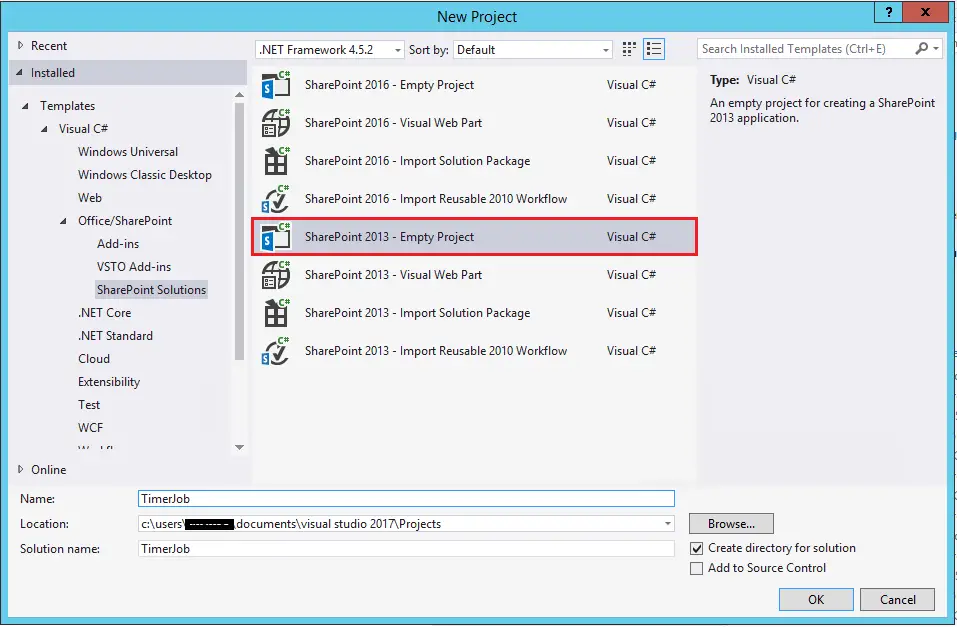
- Select Deploy as a Farm Solution
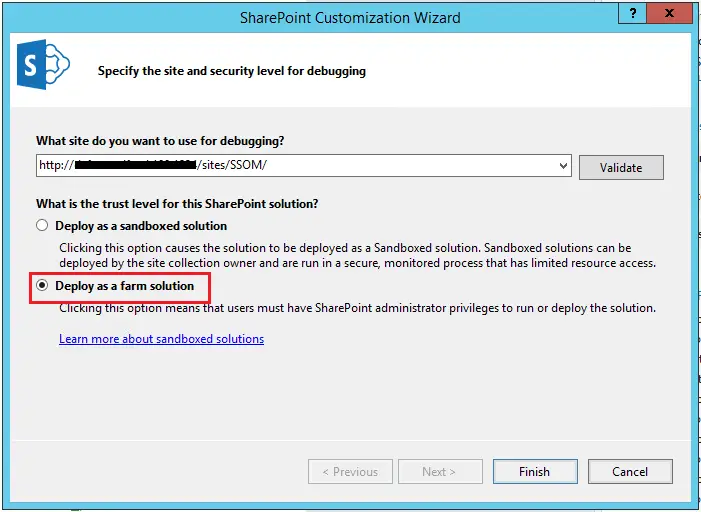
- Right Click on Project and add a class to it. Keep the Name as TimerJob.cs
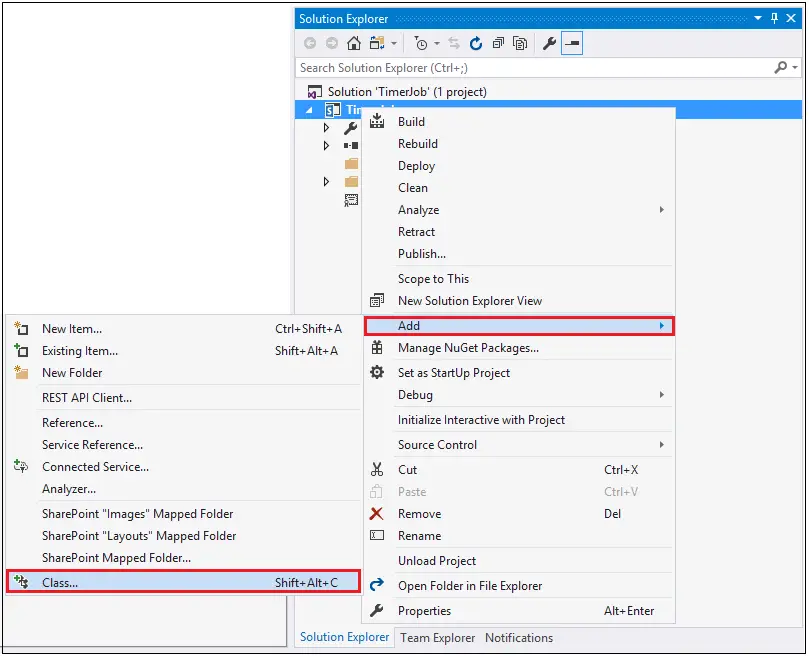
- Below is the code for newly created TimerJob.cs file. You can copy the code in your application.
- using System;
- using
System.Collections.Generic;
- using
System.Linq;
- using System.Text;
- using
System.Threading.Tasks;
- using
Microsoft.SharePoint.Administration;
- namespace TimerJob
- {
- class TimerJob : SPJobDefinition
- {
- public TimerJob()
: base()
- {
- }
- public TimerJob(string jobName, SPService service, SPServer server, SPJobLockType
targetType) : base(jobName, service, server, targetType)
- {
- this.Title = "TimerJob";
- }
- public TimerJob(string jobName, SPWebApplication
webApplication) : base(jobName, webApplication, null, SPJobLockType.ContentDatabase)
- {
- this.Title = "TimerJob";
- }
- public override void Execute(Guid
ContentDatabaseID)
- {
- try
- {
- // Write
your program here. This will be executed whenever TimerJob runs
- }
- catch (Exception ex)
- {}
- }
- }
- }
Note: In this Timer Job class, there’s one method called Execute. This is the method where we put our logic to execute when Timer Job runs.
Specify Timer Job Lock Type
|
Member Name
|
Description
|
|
SPJobLockType.None
|
There’s no lock provided. Timer Job will run on each machine of the farm where parent service is configured
|
|
SPJobLockType.ContentDatabase
|
Locks the Content Database. Timer Job runs once for each content database associated with web application
|
|
SPJobLockType.Job
|
It runs only on one machine in Farm
|
- Now, add a new feature to the project
- Right-click on Feature folder and add a feature
- Give Title of the Feature and keep the scope as WebApplication

- Now, add an Event Receiver. Right Click on Newly added feature and click on Add Event Receiver.
- We will add code for Feature Activated and Feature Deactivated events
Timer Job Feature Activation Code below:
- public override voidFeatureActivated(SPFeatureReceiverProperties properties)
- {
- try
- {
- SPSecurity.RunWithElevatedPrivileges(delegate ()
- {
- SPWebApplication
oWebApplication = (SPWebApplication)properties.Feature.Parent;
- foreach (SPJobDefinition
jobDefinition in oWebApplication.JobDefinitions)
- {
- // If a Job with the same name already
exists, delete it.
- if
(jobDefinition.Name == "TimerJob")
- {
-
jobDefinition.Delete();
- break;
- }
- }
- // install the
job
- TimerJob
timerJobObject = new TimerJob("TimerJob",
oWebApplication);
-
- // Updates the timer
schedule values
- SPDailySchedule
Timerschedule = new SPDailySchedule();
- Timerschedule.BeginHour =
4;
- Timerschedule.EndHour = 5;
- Timerschedule.BeginMinute =
30;
- Timerschedule.EndMinute =
0;
- Timerschedule.BeginSecond =
0;
- Timerschedule.EndSecond =
0;
- timerJobObject.Schedule =
Timerschedule;
-
oWebApplication.JobDefinitions.Add(timerJobObject);
- });
- }
- catch (Exception ex) { }
- }
Timer Job Feature Deactivation Code below:
- public override void FeatureDeactivating(SPFeatureReceiverProperties properties)
- public override void
FeatureDeactivating(SPFeatureReceiverProperties properties)
- {
- try
- {
- SPSecurity.RunWithElevatedPrivileges(delegate ()
- {
- SPWebApplication
oWebApplication = (SPWebApplication)properties.Feature.Parent;
- // On deactivating the
feature, delete the Timer Job
- foreach (SPJobDefinition
jobDefinition in oWebApplication.JobDefinitions)
- {
- if
(jobDefinition.Name == "TimerJob")
- {
-
jobDefinition.Delete();
- }
- }
- });
- }
- catch (Exception ex) { }
- }
- In the feature activation code above, we have created an object SPDailySchedule, which is used for setting timer job to run once Every Day. The same way we can also create other schedules as mentioned below.
|
Schedule Class
|
Description
|
|
SPYearlySchedule
|
Timer Job runs every Year
|
|
SPMonthlySchedule
|
Timer Job runs every Month
|
|
SPMonthlyByDaySchedule
|
Timer Job Runs on the given day and week of the month. i.e. 2nd Sunday of the month
|
|
SPWeeklySchedule
|
Timer Job runs once per week
|
|
SPDailySchdedule
|
Timer Job runs once per day
|
|
SPHourlySchedule
|
Timer Job runs once every hour
|
|
SPMinuteSchedule
|
Timer Job runs after every minute-interval specified.
|
|
SPOneTimeSchedule
|
Timer Job runs only one time
|
- By default, you can keep the feature deactivated. Open the feature >> Click on properties >> as shown in below Screenshot, keep the value as False for the property Activate on Default.
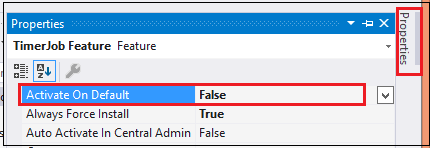
- Now, you can deploy the solution from the visual studio. Right-click on Solution and click on Deploy.
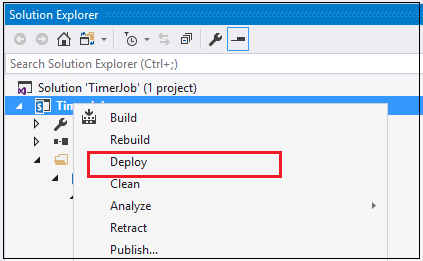
Note:
Whenever you deploy Timer Job solution, make sure you restart timer service from services.msc. You can follow the below-mentioned steps.
Restart SharePoint Timer Service :
- Go to search bar and look for services.msc >> click on it.
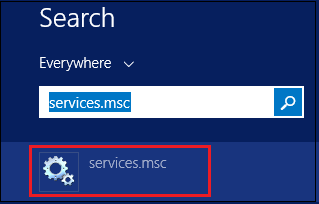
- Locate SharePoint Timer Service >> Right-click on it and Restart it
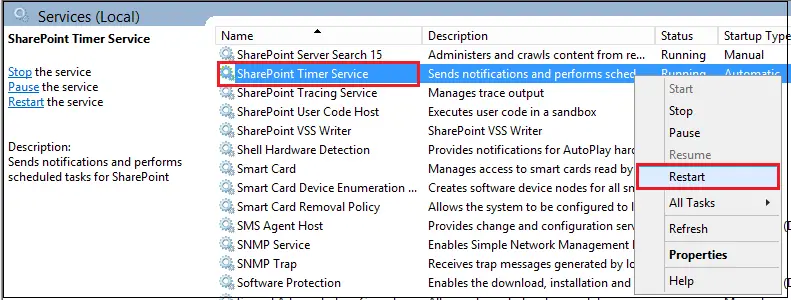
Activate the Feature
- Go to Central Administration >> Manage Web Applications. Click on the Web Application and then click on the Manage Features from Ribbon.
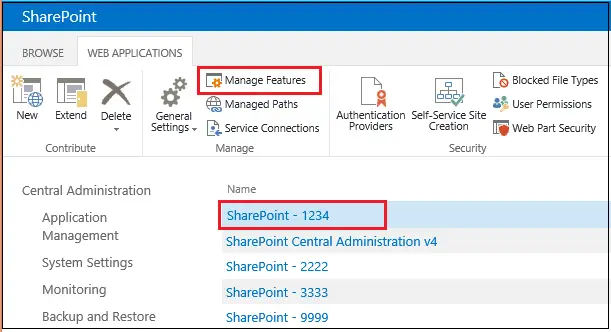
- You will be able to see the feature you just deployed. Activate the feature.
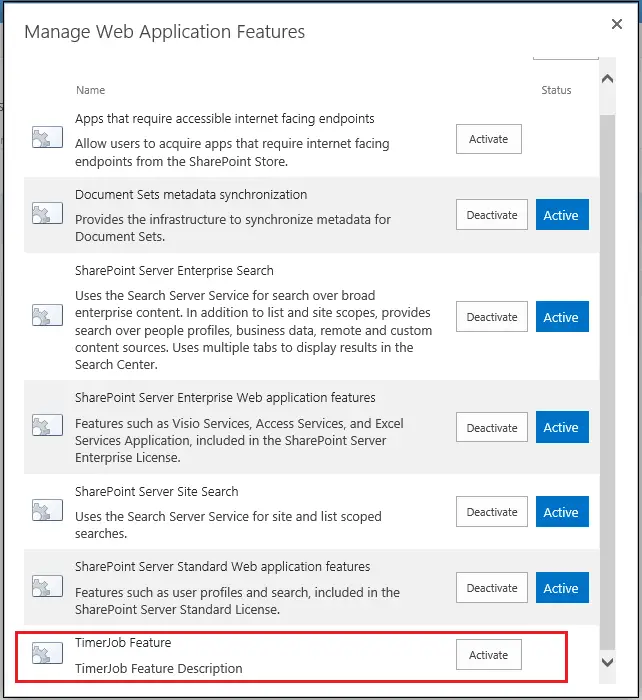
Locate the deployed Timer Job
- Go to Central Administration >> Monitoring >> Review Job Definition

- Find out the Job you deployed and click on it. You can see the schedule already set, whatever you had set programmatically.
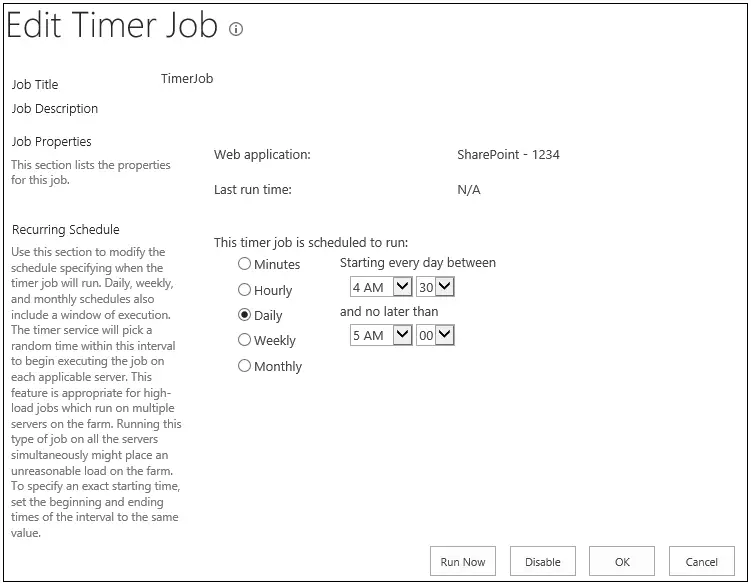
Timer Job Debugging
- Debug Feature Receivers: If you want to debug feature Activation / Deactivation methods, you need to press Ctrl + Alt + P and Attach w3wp.exe process.
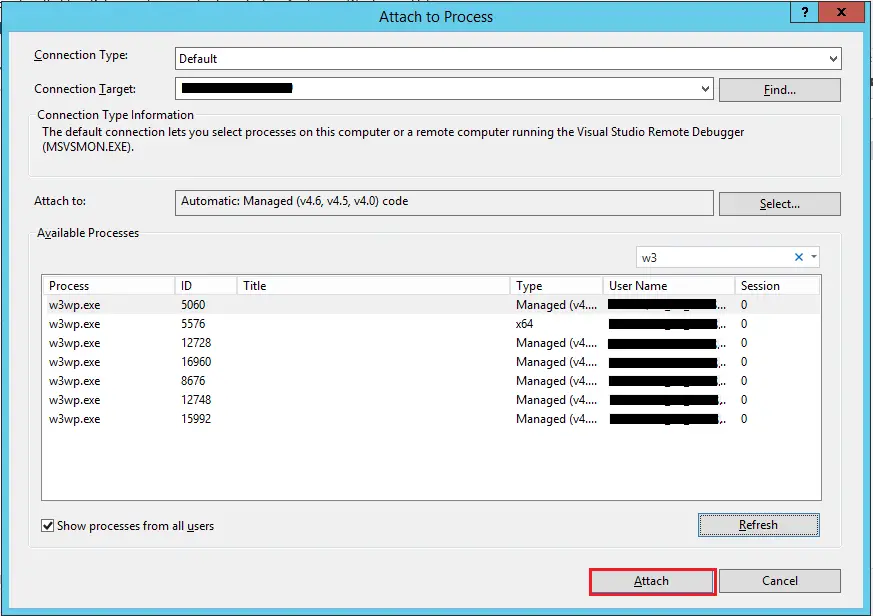
- Debug Timer Job: To debug the actual implementation of the Timer Job, you need to put a breakpoint in Execute() Method in Timer Job Class (TimerJob.cs in above example), press Ctrl + Alt + p and attach OWSTIMER.EXE process.
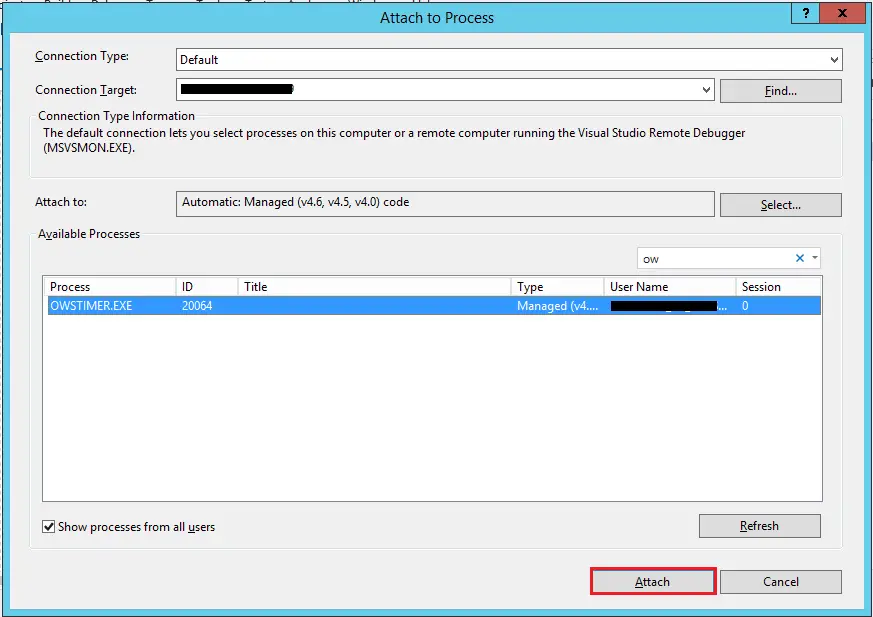
Conclusion:
We went through the process of creating and deploying timer job in SharePoint on-premises environment. We also understand how we can debug the SharePoint Timer Job.